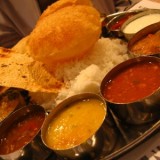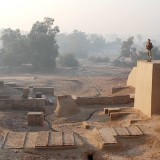Subhash Kak is Regents Professor of Computer Science at Oklahoma State University in Stillwater. He has written six books of verse in English and Hindi and another 14 on a wide variety of subjects, including history of science and art. He was the anchor of Raga Unveiled, a four-hour documentary on Hindustani music. His books of poetry are The Conductor of the Dead, The London Bridge (Writers Workshop, Kolkata), The Secrets of Ishbar (Vitasta), The Chinar Garden (Blue Sparrow), Eka Taal Ek Darpana (Raka Prakashan), and Mitti Ka Anuraag (Alakananda). Excerpts from an interview:
You have been described as a Renaissance man. As an India scholar, what period in Indian History would be comparable with the term?
I think the term “Renaissance” is most apt for the last 200 years of Indian history, the period of its engagement with Europe, and a period of grave danger to its very existence. To serve as a profitable colony of Britain, India had to be mastered and refashioned in the image of Europe. The British Empire set in motion forces that destroyed most traditional institutions, but these forces also compelled Indians to question themselves and go back to the essential roots of her culture.
The destruction of Indian institutions took place as much by neglect as by design. Until the late 18th century, India was as prosperous as Europe. But after the beginnings of the Industrial Revolution in the early 19th century (by which time Britain controlled Indian banking and other institutions), British factories were able to produce goods with which old methods of production could not compete. This suited Britain because India became the destination for its goods and since no comparable investments were made in Indian factories, India slipped further and further behind Britain. In the 200 years of British rule, Indian share of world economy dropped from 25 per cent to about two per cent, leading to unprecedented impoverishment of the country. The spread of misery was slow and relentless so that new generations did not even associate it with the British Raj, which was thanked for bringing the railways and telegraph to the country.
Mathematics, Cryptography, Indic Studies, mythology, neural networks, astronomy, poetry… how do the many meet?
Many years ago the British novelist C.P. Snow spoke of two cultures — the sciences and the humanities — which have their own mutually incomprehensible languages. Personally, I don’t agree. I think the creative impulse is the same in all fields. Each of these subjects is a collection of stories, with its own vocabulary and standards of style. Once one has mastered these elements, one is creative if one is able to see familiar things in new ways. And as far as aesthetics is concerned, there is a marvellous 1000-year-old Indian theory of it called dhvani, according to which the best way to communicate new insights is through hint, example and suggestion.
I am curious to know where you have found an overlap between Science and Vedic Religion/Philosophy.
The essence of the Vedas is a narrative on who the experiencing self is. Ordinary science informs us of the relationships between objects and also their transformations. But the Vedas say that this ordinary science leaves out the self who observes these objects. The Vedas speak of two kinds of sciences: the lower (rational and linguistic), and higher (transcendental).
What sparked your interest in Indic Studies?
I think it was triggered by an essay by a Western linguist who claimed that Panini’s 2400-year old grammar of Sanskrit had anticipated the abstract form of the modern computer. In his autobiography, the great physicist Erwin Schrödinger, one of the creators of quantum mechanics, credited the Upanishads with the key idea of quantum mechanics, that reality at the deepest level is a superposition of mutually exclusive attributes.
When I was young, my father had spoken to me about Panini but I did not pay any attention. When I began a systematic study of Indian texts, the journey took me to not only to mathematics and astronomy but also to texts on art and architecture, philosophy and Puranic encyclopedias, music and literature. India, given its very ancient history, has had many cycles of decay and renaissance. The later flowerings had their unique insights and accomplishments. For example, Rajendra Chola and his successors created some of the greatest wonders of art and architecture in India and Southeast Asia at about the same time as the great Vaishnava acharyas wrote their philosophical texts. The period of the Vijayanagara Empire was coeval with Kerala’s great achievement in mathematics and astronomy.
Your view is that the Indian way is harmony and the perception of spirit or consciousness preceding material reality. How do you understand the present reality of Indian society as it is now?
As at any other time, India is precariously balanced between the horrific and the sublime. Many Indians have become “mimic men,” to use one of V.S. Naipaul’s memorable phrases. There is uncritical copying of West and excess, but on the other hand, there is increasing spiritual yearning.
In some sense, your most popular work is the book you co-authored with David Frawley. How did it come about?
In the early 1990s our family was on a driving tour through the Western states and we were surprised to hear of Hanuman temple run by Americans in Taos in New Mexico. We visited the place next day; it was like an ashram and met many idealistic young people there. There, somebody told us of David and his work in the Vedas. When I returned to Baton Rouge, Louisiana I wrote to him and soon we established a fruitful dialogue. I had discovered a long-lost astronomy of the Vedic period, which had important implications for the understanding of the earliest history of India, and I thought it would be good for us to write a popular book on the subject. David then recruited Georg Feuerstein (who sadly died last year), one of the world’s foremost scholars of yoga, to join as a co-author.
In your essay ‘Rituals, Masks and Sacrifice’, you state that word-bound religions do not encourage mythology.
Mythology is coded narrative used to describe paradoxical and transcendent aspects of reality. Word-bound religions do not admit to such paradoxes. While they speak of transcendence, it only occurs on the Day of Judgment. Knowledge is the goal of life according to the Indian religions; in word-bound religions, living within religious laws is central for which there is reward as everlasting life in paradise.
Reading through the poems in The Secrets of Ishbar, I was overwhelmed by the sense that your poems seek beauty or intuitively grasp beauty.
Beauty takes us to a space that is ineffable, a place of secrets. Sometimes when explaining beauty we speak of symmetry as an element, but there is much to it that is beyond form and words. There is a saying in Sanskrit that looking fresh and new each time is the sign of beauty. We cannot define beauty but we recognise it from signs. The challenge for the poet is to capture the dhvani of beauty. This idea of dhvani was developed by Anandavardhana and Abhinavagupta who argued that behind each word and phrase are associations and evocations that one must pause on to arrive at the sentiment or rasa of the poem. That is why the best writings can be read at so many different levels.
Do you see yourself as a Kashmiri poet in particular?
Kashmir has had a great and old tradition of mystical poetry, much of it in the style of bhakti poetry where one speaks of the separation from Krishna or the unnamed beloved. The intertwining of romantic love with mystical yearning is sometimes called lol, a hallmark of Kashmiri poetry. But Kashmiri creativity also finds expression in simple, iconic forms, and contemplative music. Historians believe that the meditative discipline of dhyāna went from Kashmir to China (where it was called chan) and eventually becoming Zen in Japan. I mention this as I am an admirer of Zen poetry and haiku. So it is hard to say if my work belongs to the Kashmiri canon. I think my sensibility has an austere edge and I have sought simplicity.
Your poems tend to peak in the closing lines. What is your personal prosody and perception of form versus content in a poem?
To the extent that a poem is a thing, it has to have a form where the pieces fit together. This is what I try to do in the closing lines of the poem by bringing the elements that are seemingly in opposition and tie them together.
Is exile a necessary condition of poetry?
Yes, exile is necessary for poetry. Exile provides distance and you see places in ways that you never suspected when you were around them. Familiarity throws a curtain over things and exile, with its accompanying suffering, is essential for one to be able to really see. For me and many other Kashmiris, it has been a physical exile from the valley of our forefathers but, for other poets, it may not be a physical exile but a separation and a tearing apart.
What is particularly American and particularly Indian in your poetry?
I believe we live in the global village and it is very difficult to separate different cultural influences in any individual. I am sure my American life has shaped me in a thousand different ways that gets reflected in my writings. On the other hand, my Indian modes of thought (samskaras) are very deep.
Poets that inspire you…
I have found inspiration from poets of diverse cultures in English translations and in originals in Hindi, Urdu, Kashmiri, and Sanskrit. Some names that pop up are Lalla, Hafiz, Rumi, Mirabai, Ghalib, Yeats, Eliot, Cummings, Neruda.
What is the place of philosophy in poetry, if it holds one?
The structure that we give to our works is informed by a philosophy of which we may not be consciously aware. In my view, the purpose of poetry is to communicate deep truths that are not accessible to ordinary narrative. Poetry is a powerful vehicle of dhvani as is music.
Does the scientist in you restrict the poet in you or enrich it?
The scientist in me enriches my poetry. If the poet must find a unique voice, mine is different from most others because my experience has not only literature but also a big dose of science in it.
I want to touch specifically upon the Prajna Sutras because I think you’ve achieved something quite out of the ordinary in that collection. As a contemporary Indian poet you bring philosophy back to the realm of poetry and the notion of poetry as revealed literature. Comment.
I agree that the Prajna Sutras are special for they go to the heart of the poetic impulse and they do so in a way that is uniquely Indian. Indian writing is often shallow not only because it is imitative but because it plays on the stereotypes familiar to the Western reader for it is written for that audience. Indian writing will become world class only when it finds its own dhvani.
The sutras are paradoxical in the sense they state the insufficiency of language to state reality; it can only be suggested. Is poetry inadequate in the final analysis as it operates through language mostly as a medium?
Poetry will be limited in its linguistic content but, unlike other literature, it has the capacity to evoke rasa, and take the reader to the place of mystery.
(2651)

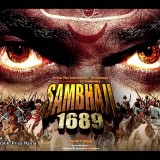
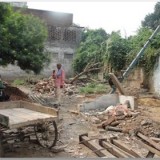

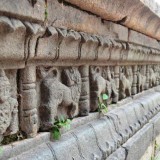
 Local scholars are still unsure about her identity, but what they do know is that this shrine’s unique roots lie not in China, but in far away south India. The deity, they say, was either brought to Quanzhou — a thriving port city that was at the centre of the region’s maritime commerce a few centuries ago — by Tamil traders who worked here some 800 years ago, or perhaps more likely, crafted by local sculptors at their behest.
Local scholars are still unsure about her identity, but what they do know is that this shrine’s unique roots lie not in China, but in far away south India. The deity, they say, was either brought to Quanzhou — a thriving port city that was at the centre of the region’s maritime commerce a few centuries ago — by Tamil traders who worked here some 800 years ago, or perhaps more likely, crafted by local sculptors at their behest.